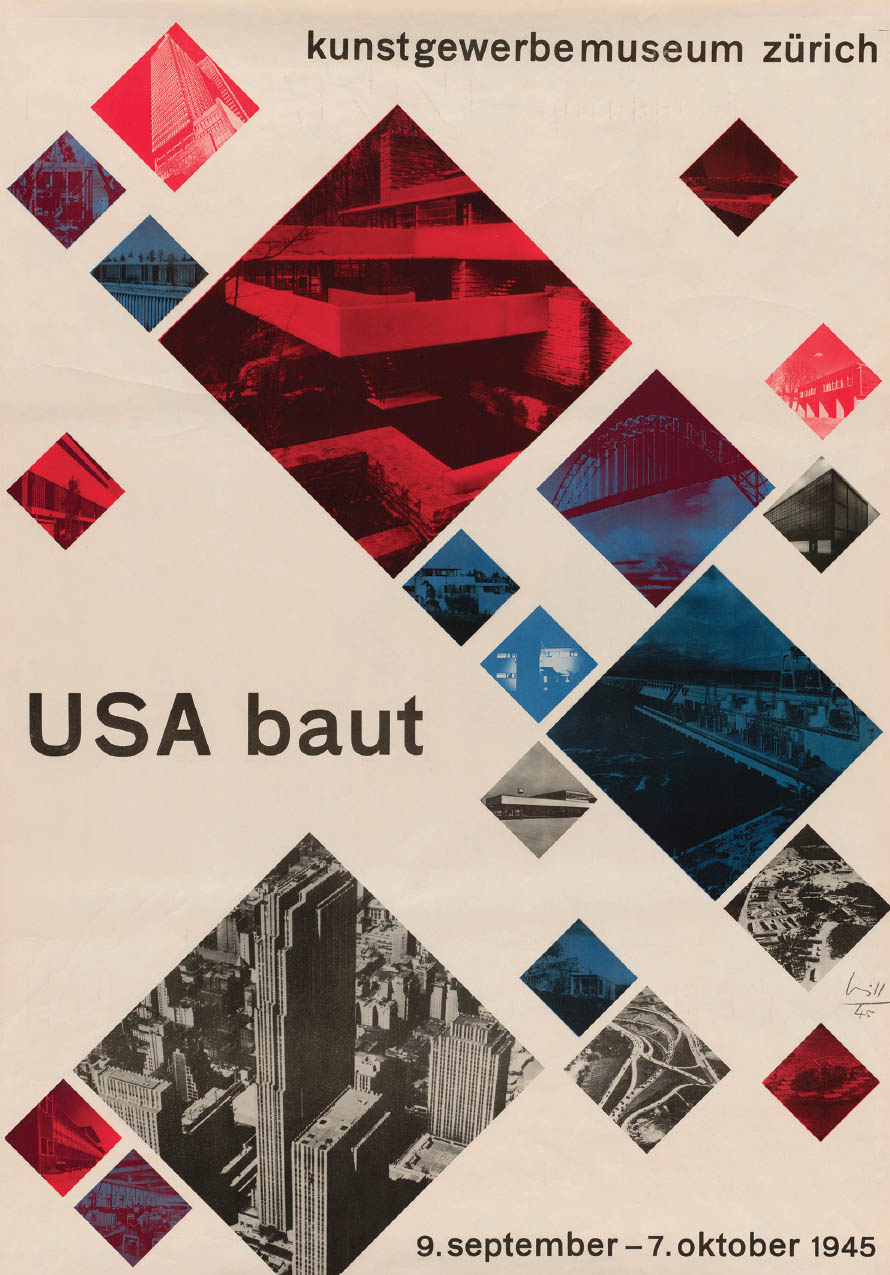THEORY AT WORK
1960s–1970s

MAX BILL USA baut, 1945. Bill believed in precision, order, and structure, yet he never lost sight of the human at the center of each project. In response to a questionnaire sent out by the editors of Bauhaus magazine in 1928, Bill wrote: “The highest demand for human beings in a social regard is: personal freedom.…This is why technology is so important. Technology should liberate the people, but through the political system technology has subjugated people even more.”

clockwise from top left: LADISLAV SUTNAR Pages from Sweet’s Catalog Service, 1941–60: ALCO Triple Service; Atlantic Flexible Metal Hose; and Cuno Continuously Cleanable Filters for Product Designers. Sutnar used his work for Sweet’s Catalog Service as a testing ground for the most effective organization of information in the postwar industrial age. He remarks in Visual Design in Action: “All of the conventional and other nonfunctional approaches prove inadequate when tested by industry’s new need for a dynamic system of information design. They fail to meet the requirements for functional information flow so necessary for fast perception.”

KARL GERSTNER Compendium for Literates: A System of Writing (MIT Press, 1974). On the book jacket, Compendium is described as “a system established on structural criteria. And, in anticipation of the not-so-distant future, supplies parameters for the programming of electronically controlled, i.e., computer typography.” Gerstner’s fascination with typography and computers has played out repeatedly over his career. While working for IBM in the 1980s, Gerstner read about famed computer scientist Donald Knuth’s early work with Metafont. Intrigued by the concept of mathematically programmed letterforms, Gerstner contacted Knuth to collaborate on an original typeface for IBM. Although Knuth was willing, the project eventually fell apart because of time constraints.

SOL LEWITT Plan for a Wall Drawing, 1969. Over the course of his career, LeWitt created more than 1,270 wall drawings. The parameters of the process, or instructions, create the concept from which each form manifests. Individuals still enact LeWitt’s wall drawings today, continuing to follow his instructions, each bringing a unique subjectivity to the process.

STEWART BRAND Whole Earth Catalog: Access to Tools (Portola Institute, 1970). Brand believes in the power of amateurs. In “We Are as Gods,” he claims that the Whole Earth Catalog, created with an IBM Selectric Composer, is the earliest example of desktop publishing.1

WIM CROUWEL Poster for the Stedelijk Museum, Amsterdam, 1968. As a modernist, Crouwel looked to materials to guide form. The structured rigor of his approach lent itself to the limitations of computing. The natural grid of the screen fit perfectly with his existing Swiss style gridded methodology.





